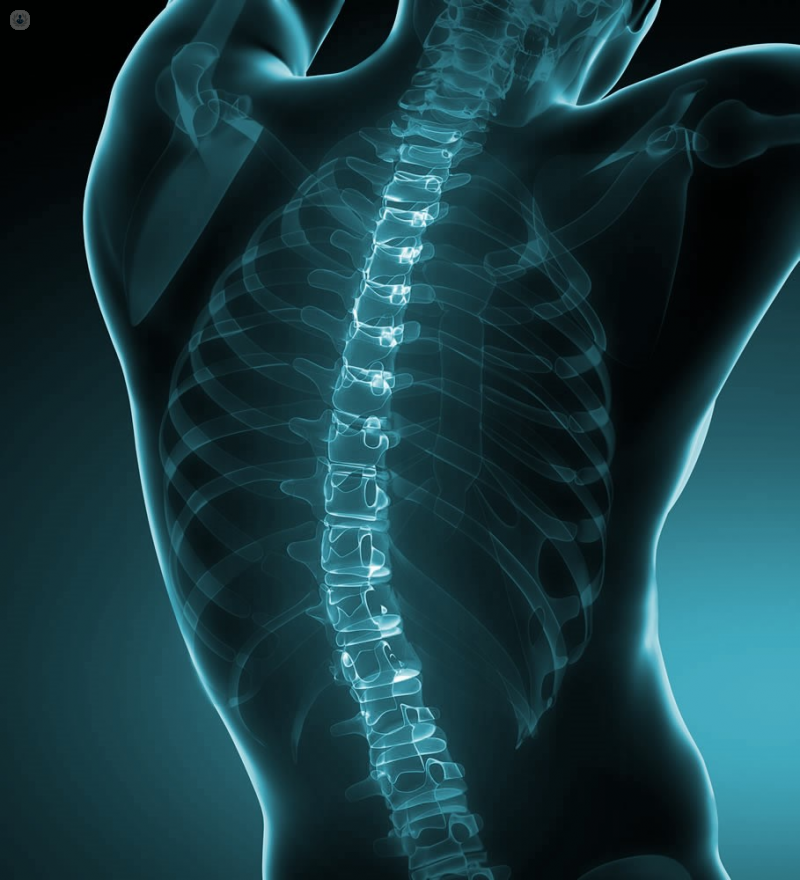

What is spinal fusion?
Spinal fusion, also known as vertebral arthrodesis, is a surgical intervention that aims to fuse two vertebrae in the spine permanently, so that there is no movement between them.

Why is spinal fusion performed?
Spinal fusion is carried out to treat degenerative diseases of the spine, such as:
- spinal stenosis
- fracture in the vertebrae
- infections or tumours
- spondylolitesis (condition that causes a vertebra to slide forward)
- curves in the spine, such as scoliosis or kyphosis
In some cases, spinal fusion carried out as part of a wider surgical procedure to repair the spinal cord, such as when treating a slipped disc.
What happens during spinal fusion?
Spinal fusion consists of fixing two bone pieces together with the use of screws, plates and titanium bars. The goal is to stabilise the spine to relieve local pain as well as peripheral nerve pain, or ensure that the spine grows in the right way.
The spine can be approached from the front, back or side, depending on where the fusion needs to be made. Some surgeons are able to perform spinal fusion using minimally-invasive techniques, which can result in fewer complications and a faster recovery.
To successfully fuse the two vertebrae together, a bone graft is generally required that will be placed in between. This could be harvested from a donor, made from your own pelvic bone, or made from synthetic material.
The overall length of the surgery depends on how easily the surgeon can access the spine, and if any other procedures are being performed.
Preparing for discectomy
No special preparation for discectomy is required. You will, however, need to inform the doctor of any medications you are taking including herbal supplements. You will also need to see the anaesthetist prior to the operation to assess your suitability for general anaesthetic.
Aftercare
After surgery, you may need to stay in hospital for a few days. You’ll be gradually introduced back into physical activity to ensure your recovery is a smooth as possible, with a program of physiotherapy that generally starts six weeks after your operation. You will also be given painkillers to manage the symptoms immediately after surgery.
Finally, when returning home, you’ll be given advice on complications to watch out for, including blood clots and infection.
